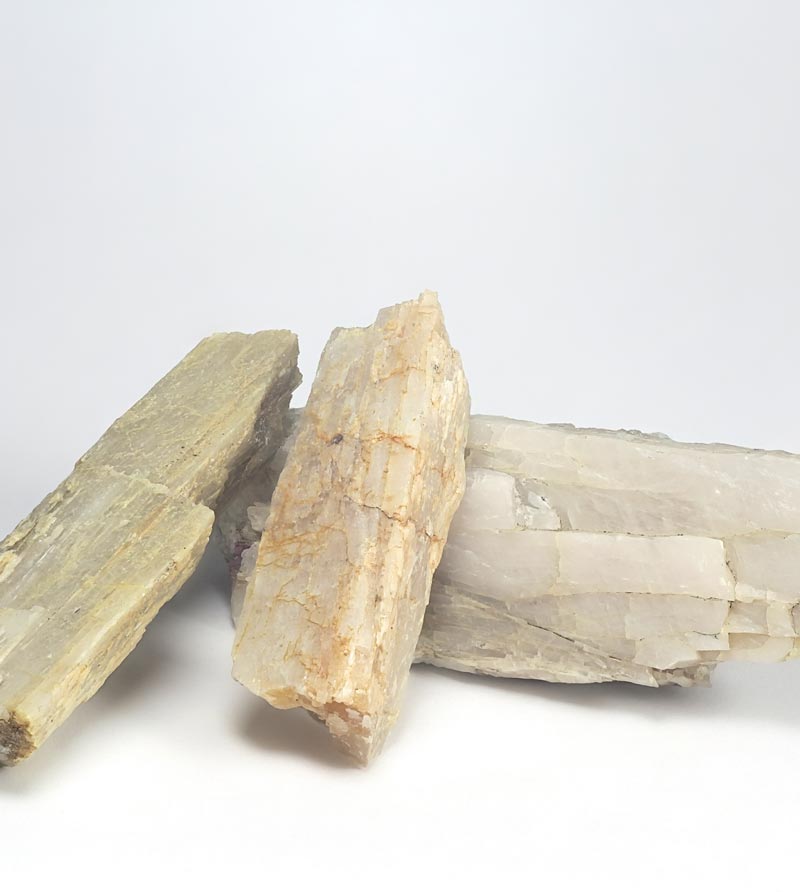Methamphetamine, or meth, is a popular party drug that has a high risk of addiction. The drug causes an intense euphoria that comes on quickly and subsides, causing people to binge the drug to sustain the feeling. This makes meth highly addictive and dangerous.

There Is A Better Way To Live. It's Time To Get The Help You Deserve.
Statistics On Meth Use, Misuse, And Addiction
According to the National Survey on Drug Use and Health, self-reported meth use increased by about 22%, or 1.66 million adults, in 2015 to more than 2 million in 2019.[2] Deaths from methamphetamine overdoses more than doubled between 2015 and 2019, from 2.1 to 5.6 per 100,000 people, according to the Centers for Disease Control and Prevention (CDC).[3] Some of this is due to meth being contaminated with fentanyl.
Effects Of
Meth Abuse
Meth abuse in both the short and long term can have serious effects on physical and mental wellbeing.
- Some of the short-term effects of meth include:
- Euphoria or a “rush”
- Dangerous elevation of heart rate, blood pressure, and temperature
- Decreased appetite and rapid weight loss
Can You Overdose on Meth?
Yes, you can overdose on meth if you take too much. The toxic or lethal amount of meth varies from person to person, but exceeding your threshold can lead to severe and potentially life-threatening complications.
Signs and Symptoms of Meth Overdose
The symptoms of a meth overdose can include:
- Severe agitation or anxiety
- Increased heart rate
- High blood pressure
- High body temperature
- Seizures
- Irregular heartbeat
- Hallucinations
- Delusional thinking
- Loss of consciousness
What to do if you suspect someone is overdosing on meth:
A meth overdose is a medical emergency. If you suspect someone is experiencing a meth overdose, call 911 immediately. Prompt medical attention is necessary to reverse a meth overdose and prevent complications from meth toxicity. Stay with the person until emergency medical services arrive.
Dangers of Long-Term Meth Use
Some of the long-term effects of meth may include:
- Severe psychological effects like anxiety, paranoia, hallucinations, and violent behavior
- Cognitive deficits in memory, attention, and decision making
- Dental problems and tooth decay (meth mouth)
- Skin sores and rapid aging
- Weight loss and malnutrition
- Cardiovascular issues and an increased risk of heart attack and stroke
- Elevated risk of developing mental health disorders like depression and anxiety
- Overdose
- Addiction
Mixing Meth with Other Drugs
Combining meth with other drugs can significantly increase the risks and dangers associated with substance use. Taken with other stimulants like cocaine, meth can significantly increase the risk of cardiovascular issues like heart attacks or stroke. The risk of overdose is also increased when meth is mixed with stimulants or depressants like opioids. Some drugs can amplify the effects of one another, leading to dangerous levels of intoxication.
Meth Addiction And Abuse
Meth addiction is classified as a stimulant use disorder in the Diagnostic and Statistical Manual of Mental Disorders, Fifth Edition (DSM-5). To meet the criteria for a stimulant use disorder, including a methamphetamine use disorder, someone must meet at least two of the following criteria within a 12-month period:
- Taking meth in larger amounts or over a longer period than intended
- Unsuccessful efforts to cut down or control meth use
- Spending a great deal of time obtaining, using, or recovering from the effects of meth
- Experiencing meth cravings
- Failing to fulfill major obligations at work, school, or home because of meth use
- Continuing to use meth despite persistent or recurrent social or interpersonal problems
- Giving up important activities because of meth use
- Using meth in situations where it is physically hazardous
- Continuing meth use despite physical or psychological problems
Is Meth Addictive?
Yes, meth is a highly addictive central nervous system stimulant that can lead to rapid tolerance and dependence. The drug produces intense euphoria and energy, but these effects fade quickly, leading people to use more and more to maintain the feeling.
How Addictive is Meth?
Meth acts on the central nervous system, increasing the release of dopamine, a neurotransmitter associated with pleasure and reward. The surge in dopamine creates intense feelings of euphoria that contribute to addiction.
Signs of Meth Addiction
Recognizing meth addiction symptoms is crucial for early intervention and getting help. Meth addiction may show a range of physical, behavioral, and psychological signs, including:
- Missing responsibilities
- Withdrawing from friends and family
- Compulsive drug seeking
- Rapid weight loss
- Poor hygiene
- Severe dental problems
- Skin issues
- Uncontrolled movements or twitching
- Intense mood swings
- Extreme paranoia
- Hallucinations
- Psychosis
- Impaired memory and concentration
- Poor decision making and risky behaviors
- Deceptive behaviors
Meth Addiction And
Mental Health
Meth addiction can have devastating effects on mental health and wellbeing. Long-term meth use can cause significant anxiety, confusion, insomnia, mood disturbances, and violent behaviors. People who abuse meth may also show psychotic symptoms like paranoia, hallucinations, and delusions, which can last for months or years after stopping meth use.


Cutting Agents Used For Meth
Virtually all meth is illicitly manufactured, which often means cutting agents or adulterants are added to add bulk to the product and improve profit margins. These can range from inert fillers like talcum powder or baking soda to caffeine, lithium, and acetone. Some of the precursor chemicals used to synthesize meth, such as pseudoephedrine, can remain as impurities in the final product.
Meth Addiction Treatment
Meth rehab can vary in its cost, length, and specific process based on your individual needs, the treatment facility, your location, and other factors. Depending on the specifics of the treatment plan, meth addiction rehab can last several weeks or several months.
Meth Addiction Treatment Levels of Care
Meth addiction treatment is tailored to the individual based on their needs, medical history, and goals. Different levels of care are available to provide intensive or more flexible support along the recovery journey.
- Medical detox: Detox is often the first step in treating a meth addiction to provide medical and emotional support for people going through intense withdrawal and keep them safe and comfortable.
- Inpatient treatment: Inpatient or residential treatment provides 24/7 care in a structured environment with intensive therapeutic interventions for people who need more support.
- Outpatient treatment: Outpatient treatment is more flexible. People can live at home and sleep in their own beds while attending therapy sessions during the day.
- Aftercare: Once treatment is complete, aftercare programs provide community support and life skills to help people transition back to everyday life and foster long-term recovery.
Therapies Used in Meth Addiction Treatment
Meth addiction treatment is complex and requires individualized treatment using evidence-based therapies. These therapies help to understand the underlying factors that contribute to addiction and promote lasting recovery.
Some of the therapies used for meth addiction treatment may include:
- Cognitive behavioral therapy
- Somatic experiencing
- Experiential therapy
- Group therapy
- Eye movement desensitization and reprocessing (EMDR)
- Brainspotting
- Outdoor recreation
- Nutritional counseling
Co-Occurring Disorders
Co-occurring disorders are a substance abuse disorder and mental health disorder that occur simultaneously. When meth addiction co-occurs with other mental health conditions, it can create a complex set of challenges for people in recovery. Effective treatment has to address both the addiction and the mental health disorders together, rather than individually.
With meth addiction, psychiatric disorders like depression, anxiety, or bipolar disorder, trauma disorders like post-traumatic stress disorder, and attention deficit hyperactivity disorder (ADHD) often co-occur.
How to Find Meth Addiction Treatment in Orange County
If you or a loved one is seeking treatments for meth addiction, one of your best options is to speak with your primary care provider or insurance provider to learn more about approved treatment facilities or modalities. You can also find local rehab centers using the Behavioral Health Services Locator tool from SAMHSA.
Once you narrow down your options, make sure to do your research and read reviews, evaluate testimonials and treatment options, and speak with the staff. You could also speak with your network to get recommendations.
Learn More About Our Programs
Meth Detox And Withdrawal Management
Meth withdrawal can be intense, but it’s not usually life-threatening. People often experience a range of physical and psychological symptoms that can be severe and may even cause them to relapse. Because of this, meth addiction help with detox is often the best way to begin rehab and overcome the initial struggle of withdrawal.
Frequently Asked Questions
What Does Meth Look Like?
Meth looks different depending on its production, but it’s generally a white or off-white powder. Crystal meth looks like shards of glass that are clear, white, gray, or a faint blue.
What Is Meth Mouth?
Meth mouth is a term for the extreme tooth decay that can occur from prolonged meth abuse, which may include cavities, stains, gum disease, and loose or missing teeth. This is caused by the effects of meth, which can cause people to neglect their personal hygiene and eat sugary foods. The acidic content of meth may also combine with additives that worsen tooth decay. The damage can be severe, but there are treatment options to restore the look and function of the teeth, such as dentures or implants.
Can Meth Kill You?
Meth overdose is a significant risk with prolonged meth consumption. Aside from the potential toxicity of meth itself, the drug may be cut with other potent drugs like fentanyl that can lead to an overdose.Treatment for meth addicts is crucial to prevent these risks.
Sources
[1] U.S. Department of Health and Human Services. (2023b, February 13). What is the scope of methamphetamine use in the United States?. National Institutes of Health. Retrieved from https://nida.nih.gov/publications/research-reports/methamphetamine/what-scope-methamphetamine-misuse-in-united-states on 2023, November 21.
[2] Velázquez, T., & Remrey, L. (2022, August 16). Methamphetamine use, overdose deaths, and arrests soared from 2015 to 2019. The Pew Charitable Trusts. Retrieved from https://www.pewtrusts.org/en/research-and-analysis/articles/2022/08/16/methamphetamine-use-overdose-deaths-and-arrests-soared-from-2015-to-2019 on 2023, November 21.
[3] Velázquez, T., & Remrey, L. (2022, August 16). Methamphetamine use, overdose deaths, and arrests soared from 2015 to 2019. The Pew Charitable Trusts. Retrieved from https://www.pewtrusts.org/en/research-and-analysis/articles/2022/08/16/methamphetamine-use-overdose-deaths-and-arrests-soared-from-2015-to-2019 on 2023, November 21.

